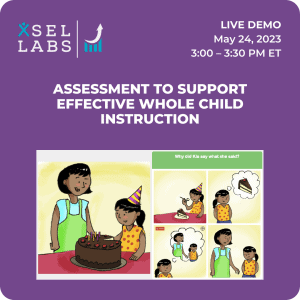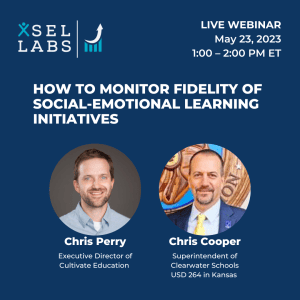By Mark Gallagher, Ed.S., Director of Continuous Improvement, Marysville Schools
Where To Begin
As educators, we live in an age of “new” and “one more thing.” New legislative requirements, new curricula, new procedures, and other drills we need to do this school year can feel overwhelming and exhausting for everyone in the school, district, or organization.
Social-emotional learning (SEL) is often met with the same sentiment. Within the walls of a school, it is common to hear, “When will I fit these SEL lessons in? How much time is SEL going to take? I need to focus on my core content. I teach bell-to-bell and don’t have time in my day for SEL.” We are often quick to handwave away these concerns because we believe in the importance of young persons having opportunities to develop their social and emotional skills. Still, these are fair (and quite real) questions and concerns.
Further, to highlight this dilemma, while 72% of school leadership reports social-emotional learning as being one of their top priorities, only 53% of teachers indicate that their school used a social-emotional learning program or curriculum materials in the 2021-2022 school year (Schwartz et al., 2022). In essence, SEL has taken precedence, but we have experienced failures to launch.
Illuminating Another Path
What if there was a different path that we could follow? What if we did not have to decide between core content instruction and social-emotional learning? What if we did not have to carve out or build in additional time for social-emotional learning to occur? What could that look like?
One of the most natural places for social and emotional learning to live is within literacy instruction—a content area rich in opportunities for discourse, which has been suggested to be an entry point for social & cognitive development [Fenning, Baker & Juvonen, 2011]. Given the instructional modalities of literacy, question-asking and answering naturally occur. Yet, in our quest to improve rigor and depth of knowledge, we are often left wondering: “How do I ask questions with increased rigor?”
The answer lies right in front of us—we can ask questions that are social and emotional in nature. For example, with young students, an entry-level question may be, “What emotion is this character feeling in the story?” To take it a step further, “How do you know?” To take it even one step further, “Can you think of a time when you felt like the character in the story?” The same opportunities present themselves in the written form. For example, when presented with multiple texts centered around a common theme, provide students the chance to take on the perspective of the characters or content (which you likely are already doing!). Specifically, prompting students with questions like, “What do you think it was like for these characters to experience this event? How do you know?”
Final Thoughts
While implementing social-emotional learning content and programming can seem daunting, it does not have to be “one more thing.” If we are intentional, we are presented with excellent opportunities within the core curriculum to bring these skills to life—through discussion, writing, question-and-answer, etc. The possibilities are endless, and the upside is without limit.
Join our webinar, “Practical Strategies for Integrating SEL and Tier I Literacy Instruction“, with Mark Gallagher to gain insight into how Marysville Schools uses practical strategies to integrate social-emotional learning (SEL) and Tier I Literacy instruction.
References
Fenning RM, Baker BL, Juvonen J. Emotion discourse, social cognition, and social skills in children with and without developmental delays. Child Development. 2011 Mar-Apr;82(2):717-31. doi: 10.1111/j.1467-8624.2010.01569.x. Epub 2011 Mar 9. PMID: 21410465; PMCID: PMC3064715.
Schwartz, Heather L., Michelle Bongard, Erin D. Bogan, Alaina E. Boyle, Duncan C. Meyers, and Robert J. Jagers, Social and Emotional Learning In Schools Nationally and in the Collaborating Districts Initiative: Selected Findings from the American Teacher Panel and American School Leader Panel Surveys. Santa Monica, CA: RAND Corporation, 2022. https://www.rand.org/pubs/research_reports/RRA1822-1.html.



